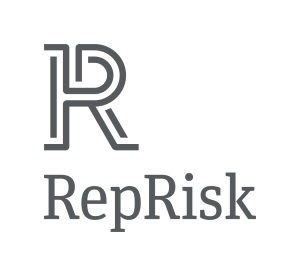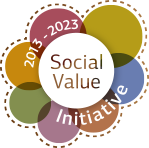 One outcome of pilot cases in previous phases, conducted by the Roundtable (RT) members was the high effort of data gathering. In the earlier phases, the focus had been on collecting primary data via surveys. As a result, in the updated methodology, which was published in the Handbook 2018, the Hotspot Assessment was added. It makes use of existing secondary data and databases. The Roundtable members were therefore searching for efficient ways to collect the necessary data for this new Hotspot Assessment step in the Methodology. In the Handbook, RepRisk is described as one of the sources for collecting data from publicly-available media and stakeholder sources external to a company, thereby covering all relevant lifecycle actors in the supply- and end of life part of the value chain.
One outcome of pilot cases in previous phases, conducted by the Roundtable (RT) members was the high effort of data gathering. In the earlier phases, the focus had been on collecting primary data via surveys. As a result, in the updated methodology, which was published in the Handbook 2018, the Hotspot Assessment was added. It makes use of existing secondary data and databases. The Roundtable members were therefore searching for efficient ways to collect the necessary data for this new Hotspot Assessment step in the Methodology. In the Handbook, RepRisk is described as one of the sources for collecting data from publicly-available media and stakeholder sources external to a company, thereby covering all relevant lifecycle actors in the supply- and end of life part of the value chain.
The small pilot performed by several members was intended to test the applicability of RepRisk as one of the data sources in the Hotspot Identification step of the PSIA methodology**. RepRisk has been used as a data source for several years already by one of the member companies – BASF – for their SEE-Balance® methodology. For the pilot, RepRisk provided several Roundtable members a four-day trial account to test its ESG Risk Platform for convenient data gathering about the various cases that were being assessed during Phase 6 of the RT.
RepRisk is a data science company specialized in ESG and business conduct risk research related to companies and infrastructure projects. Its methodology focuses exclusively on ESG risks (28 ESG Issues and 57 ESG Topic Tags, linked to international standards on ESG such as the UN Global Compact, OECD Guidelines for MNEs and more), using artificial intelligence and human analysis in 20 languages to scan 90,000+ sources on a daily basis. More than 500,000 ESG risk incidents are detected every day. In addition to specific company information, RepRisk also provides country-sector information for all countries and territories, and a total of 34 sectors such as Chemicals; Food & Beverage; and Mining. RepRisks methodology is fully rules-based and focuses on sources external to a company, which helps provide a unique perspective on a company’s risk exposure. Its primary purpose is to provide transparency and serve as a due diligence tool to help its users identify ESG risks and violations of international standards in their business and investments.
Insights and results using the RepRisk Platform varied between the team members who participated in the pilot. The following observations were made:
- Compared to desktop research, RepRisk considerably reduces the time spent on research.
- There is a good overlap of RepRisks 28 Issues and 57 Topic Tags and the social topics of the Roundtable’s However, the scoring / mapping to the PSIA performance indicators required a considerable one-time effort.
- The transparency in the way the data is collected and presented as well as the many ways to filter the data were greatly appreciated. For a first-time user, the volume and depth of data can also be somewhat overwhelming. This was confirmed by BASF who has been using this tool for several years in their product social metrics assessments for supply chain. They now have standard procedures and predefined search options to quickly assess a company and focus on the aspects relevant for their inquiry. For the participants of the trial, the 4-day timeframe was too short to develop such filters in a standardized way, however, some of the users already established an advanced set up in their accounts within this short timeframe. From a beginner’s perspective, the fact that, in some cases, the information in the RepRisk Platform still requires personal judgement of the user and a deep-dive into certain incidents presents both a strength and a weakness.
- The PSIA methodology as described in the Handbook focuses on both negative impacts / risks and positive impact. RepRisk’s methodology focuses only on adverse information. Therefore, there is no possibility to assess positive (impact) contributions of a company, a product or a project; however, most tools in this area share this characteristic.
- The ESG Risk Platform provides a comprehensive overview of companies, and a unique strength is that it is updated daily.
- Especially larger companies have a good coverage in RepRisk due to their saliency vis-à-vis media and stakeholders. RepRisk and the Institute of Applied Information Technology of Zurich University of Applied Sciences (ZHAW) have also launched an innovation project for automatic supply chain monitoring.
- The RepRisk Risk Index (RRI) score gives a very useful indication whether there are any ESG risks linked to the company that is assessed. Customized scores are also available that can be tailored to a user’s specific ESG policies.
- If a company is not yet exposed to ESG risks and therefore not present in the RepRisk Platform, it is easy to put in a request to add this company to a Watchlist for monitoring purposes. This is seen as a large advantage of the RepRisk Platform.
Overall conclusion
Overall RepRisk is a valuable tool to assist in the Hotspot assessment for companies in the value chain that are known by name and where there is no primary data (e.g., via EcoVadis) available. There is a good coverage / alignment on the social topics of the Handbook with the social topics in the ESG Risk Platform. The ESG Risk Platform is valuable in establishing a more efficient and systematic way of data collection in order to support decision-making.
==========================================
The members of the RT acknowledge RepRisk for the opportunity to receive a pilot license for a limited number of days that gave them the opportunity to try out the database for the purpose of product social impact assessment.
* RepRisk is a global leader and pioneer in data science, specializing in premium ESG and business conduct risk research and quantitative solutions. Learn more at www.reprisk.com
** PSIA methodology: assessment method for product social metrics developed by the Roundtable for Product Social Metrics; the methodology is described in the Handbook 2018.
